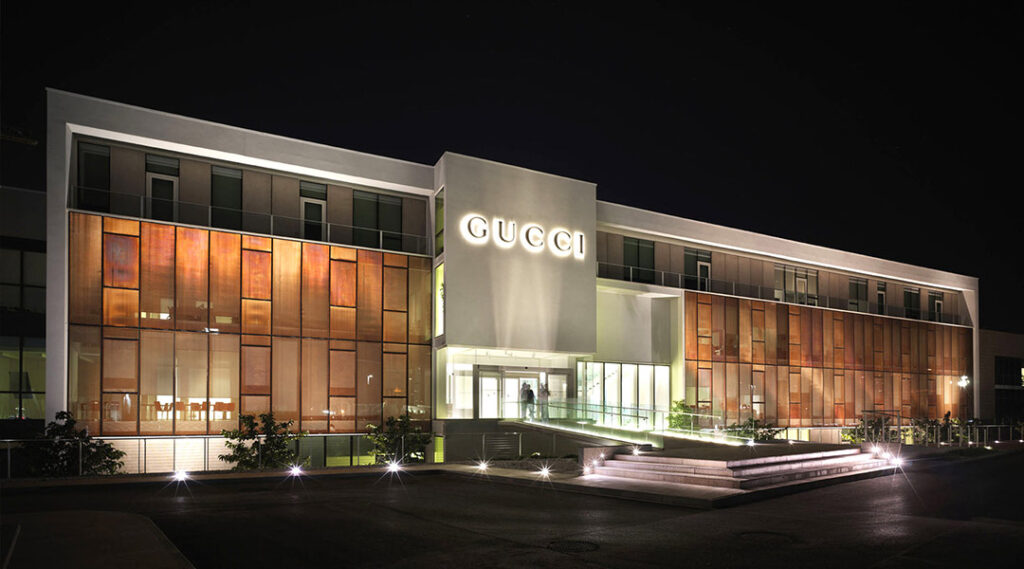This brand needs no introduction. We all want it, we all love it and we can’t get enough of it. We’ve seen countless celebrities wear it. Hell, a movie about a famous case of the Gucci family came out to add to their 100 year celebration. As eccentric their outfits get, their history was also quite eccentric. Here at Brossac Braderie, we will show you some of the history of this global fashion house.
Guccio Gucci: Bellhop to Businessman
The founder of Gucci actually started off as a bellhop in the Savoy hotel in London in 1897, at the age of 16. Since the hotel is for upper class people, he would often observe their fabrics, fashion and traveling conditions. Later on, he worked in a railway company for the upper class and for fine luggage maker Franzi.
In 1921, he opened a shop in Florence, titled Azienda Individuale Guccio Gucci. He sold imported leather luggage and had a workshop, dedicated to local craftsmen employed under him. In 1935, there was an embargo of leather imposed by the league of nations, leading on to use new materials such as raffia, wicker, wood, linen and jute. This led to the creation of the signature woven hemp with their iconic print. Fun fact: They used to produce the shoes of the Italian infantry during the second world war.

Post WW2, the shares of the company were spread among the three sons, Aldo, Vasco and Rodolfo. They aided with the success of the company, releasing handbags, loafers, eyewear, watches and jewellery to the world. The brothers also expanded to locations such as London, New York, Paris, Hong Kong and Tokyo. During this time, the brand became famous for the two Gs and the red and green stripes.
Problems arise
In the 1980s, there was quite some trouble in the family. There were multiple counts of tax evasion, opening of branches which weren’t supposed to, legal wars and even an assassination of one of the family members (Where House of Gucci comes from). In 1993, the family involvement ended when Invest-corp bought shares from Maurizio Gucci, who was subsequently killed two years later.

Facing some financial problems because of Maurizio’s spending, Dawn Mello and Tom Ford were hired to revive the brand. They took a unique direction, reducing the number of stores from a thousand to less than two hundred, reduced units sold from 22,000 to 7,000 and through the help of Domenico De Sole, revised the pricing of their products. Tom Ford focused on sensuality and provocation, realising products such as silver handcuffs and g-strings.
Enter the 2000s
In 2004, Frida Giannini, one of the lead designers under Tom Ford took over as creative director, serving in the role until 2016. The brand was percieved as stale and irrelevant at the time. Therefore, they employed Alessandro Michele to solve this issue. This was a weird decision because he was unheard of as a designer, leading to doubt among the people.
However, this decision paid off since Michele introduced a more feminized, sophisticated and intellectual feel to the brand, combining both the past and a theatrical sense to the brand. This attracted multiple young customers, increasing profits by 11% in 2017.

Nowadays, Gucci is an enormous company, having multiple initiaves in the environment, social and cultural aspects as well as the metaverse. The company stood strong and endured a 100 years of business, proving itself to be a brand of luxury and wealth. You too can expierence this wealth because we have a watch from Gucci in our store. To see this beautiful watch, click here.
